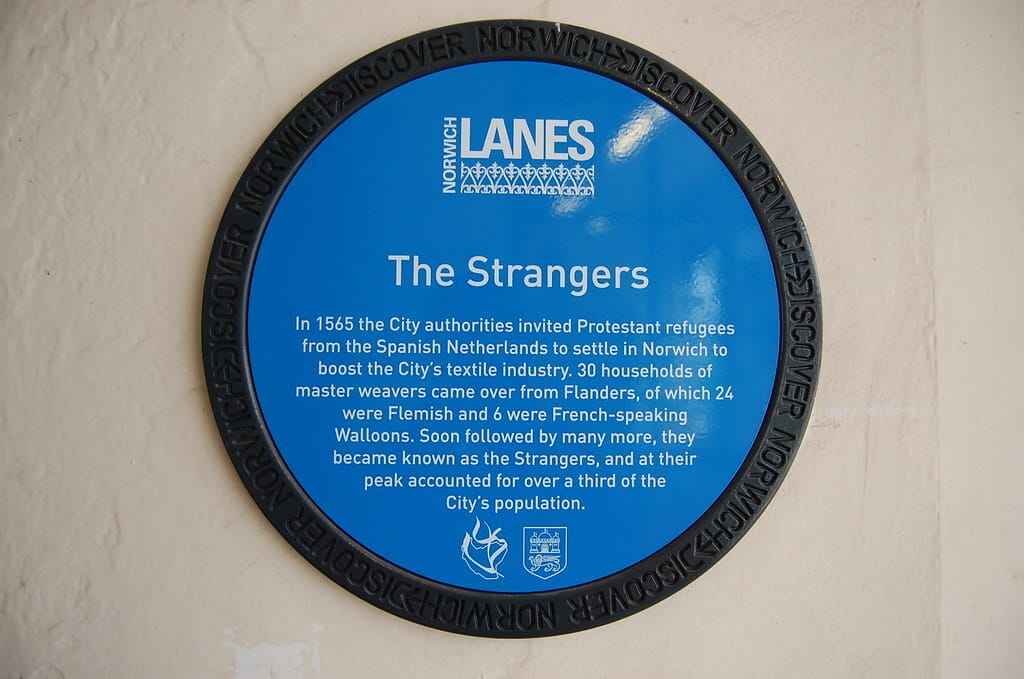- The Secret Norwich Newsletter
- Posts
- Why Norwich needs its Strangers.
Why Norwich needs its Strangers.
The story of Norwich's 16th century immigrants.
Alright?
Apparently, immigration is rather topical in Norwich at the moment. But what exactly distinguishes those new to the fine city from those born here?
Whisper it, but as it turns out, not very much. Indeed, all of our ancestors were immigrants at one point or another.
Today, we’re going to learn about some of ‘em. It’s time to meet the Strangers, who, shock horror, weren’t nearly as strange as their incumbent neighbours.
The Strangers arrive.
Welcome to Norwich in 1565. Queen Elizabeth I sits on the throne, the plague continues to pose an ever-present threat, and the football team still struggles to stay in the Premier League for longer than a single season.
England’s second city had at least 99 problems, and economic decay was certainly one. It had gotten so bad, in fact, that the city authorities asked the Duke of Norfolk* for skilled immigrants to rejuvenate Norwich’s struggling textiles trade.
The Duke was well-connected, and before long, the Queen had granted permission for 330 immigrants (30 skilled masters and up to 10 people from their household) to settle in Norwich. 24 of these families were Dutch, and six were Walloon (from Wallonia, which sounds fictional, but is in fact a region in Belgium).

The obligatory blue plaque.
These new arrivals were called the Strangers.
*Btw, the Duke of Norfolk was a bloke called Thomas Howard, who would be executed seven years later for plotting against the Queen. There’s a separate newsletter there, I reckon.
Hanged, drawn and quartered.
The Strangers were initially treated like rebellious teenagers. They were subject to 8pm curfews and given restrictions on how they spent their money. But it didn’t take long for them to integrate into Norwich society.
Their rich people married Norwich’s rich people. They rebuilt the north side of the Wensum 60 years after it was destroyed in the Great Fire of Norwich of 1507. They funded the building of churches and formed business partnerships with the locals.
By 1569, there were nearly 3,000 Strangers in the city.
But in 1570, things got frosty. A chap from Cringleford called George Redman decided that the Strangers were stealing all the jobs, which, to be fair, they were: because they were better at them than the people who were born here.
Rather than kick off outside a Bowthorpe hotel, George assembled a group of like-minded men with the aim of driving out the Strangers by force.
This rebellion didn’t last long, and the members of the group were soon apprehended. Its three organisers (George and two others) were found guilty of high treason, and hanged, drawn and quartered in the late summer of 1570.

The plague rears its head.
Despite attempts to curtail numbers, the Strangers continued to relocate to Norwich. By the mid-1570s, as many as 6,000 of Norwich’s 15,000-strong population were Strangers.
But in 1578, that all changed. “The great mortality”, i.e. the worst bout of the plague Norwich had seen since the original outbreak in 1349, arrived suspiciously soon after a royal visit by Queen Elizabeth.
It hit the Strangers particularly hard, which historians attribute to their cramped living conditions. Nearly 2,500 of them died in a year.
Their numbers recovered, and by the end of the 16th century, The Strangers accounted for around 40% of Norwich’s population.

Decline and legacy.
As the 1600s progressed, the Strangers’ numbers in Norwich declined. Some of the children grew up and went to university in Holland. But most integrated into Norwich society so seamlessly that, one day, they no longer considered themselves strangers at all.
So next time you pop into Strangers Coffee, have a pint at Strangers Tavern, snoop around Strangers Hall or apply for a membership at The Strangers Club, spare a thought for the former immigrants after whom they’re named.
Oh, and the Strangers were also canary breeders. The chubby legend below is a Norwich Canary:

It turns out that Norwich Canaries look like emos.
When people ask you why Norwich City FC are called The Canaries, now you have an answer.

‘Til next Sunday,
Secret Norwich.
Good email?I'll read every answer. |